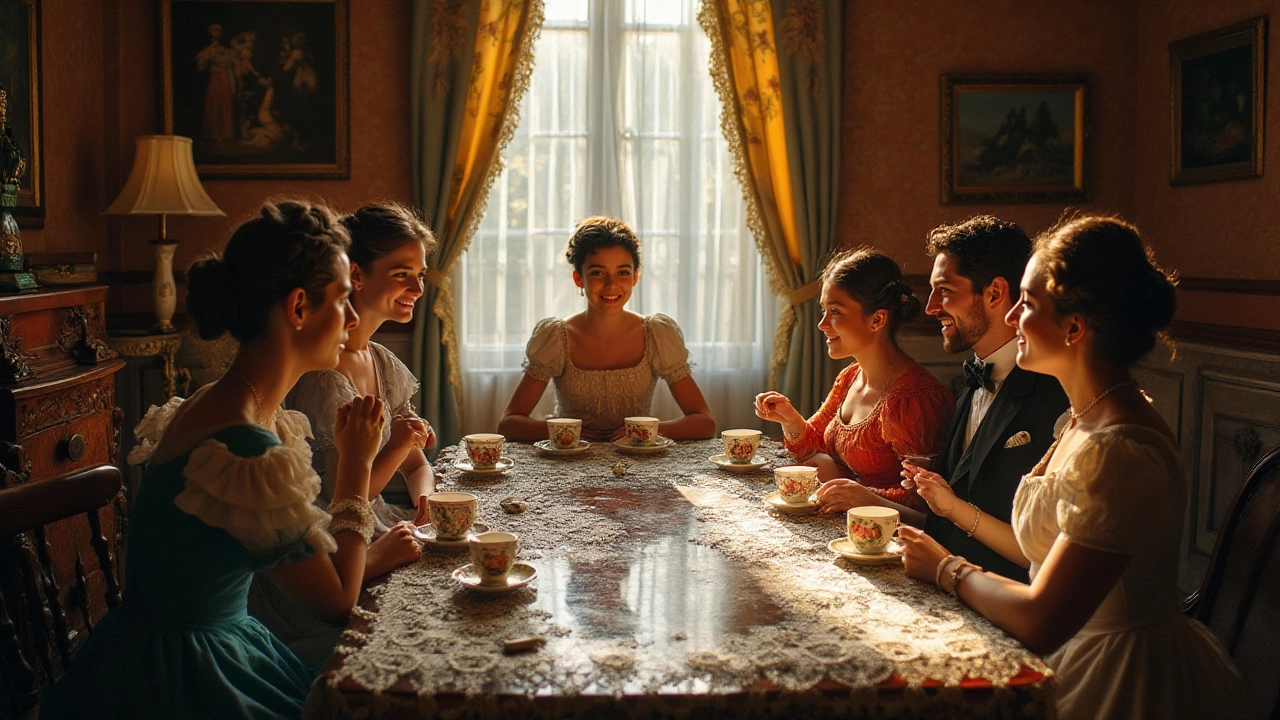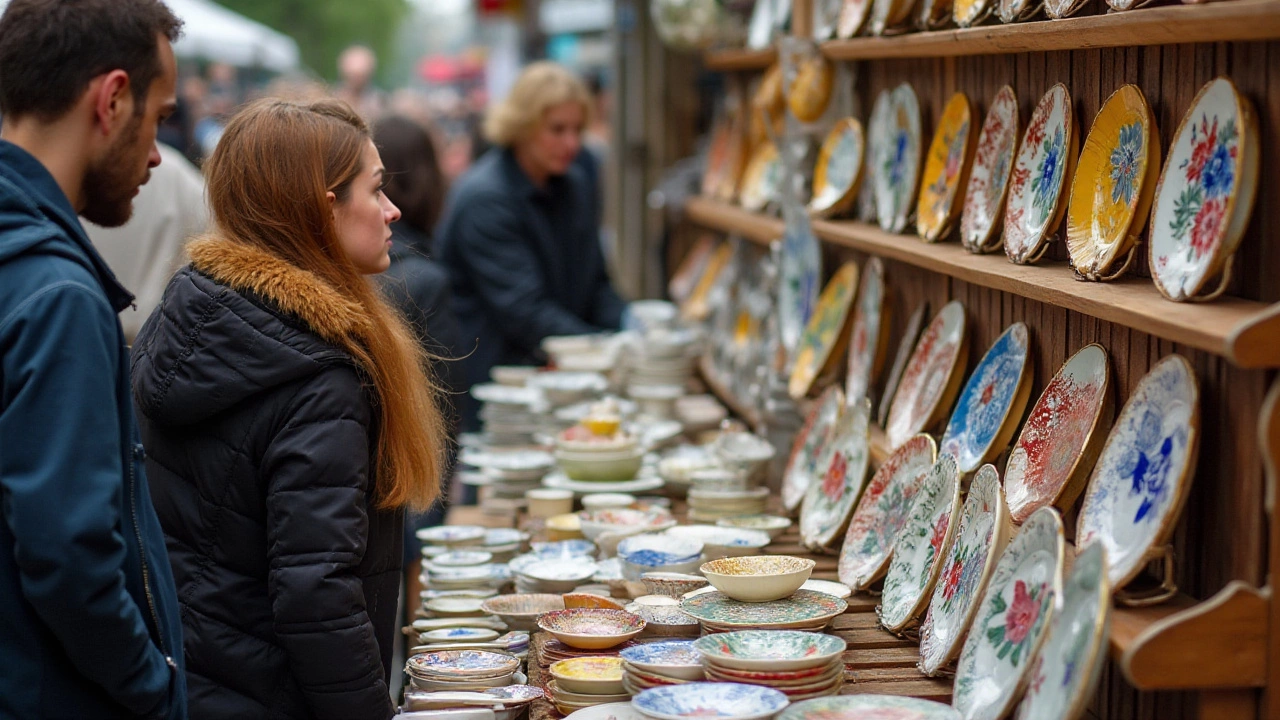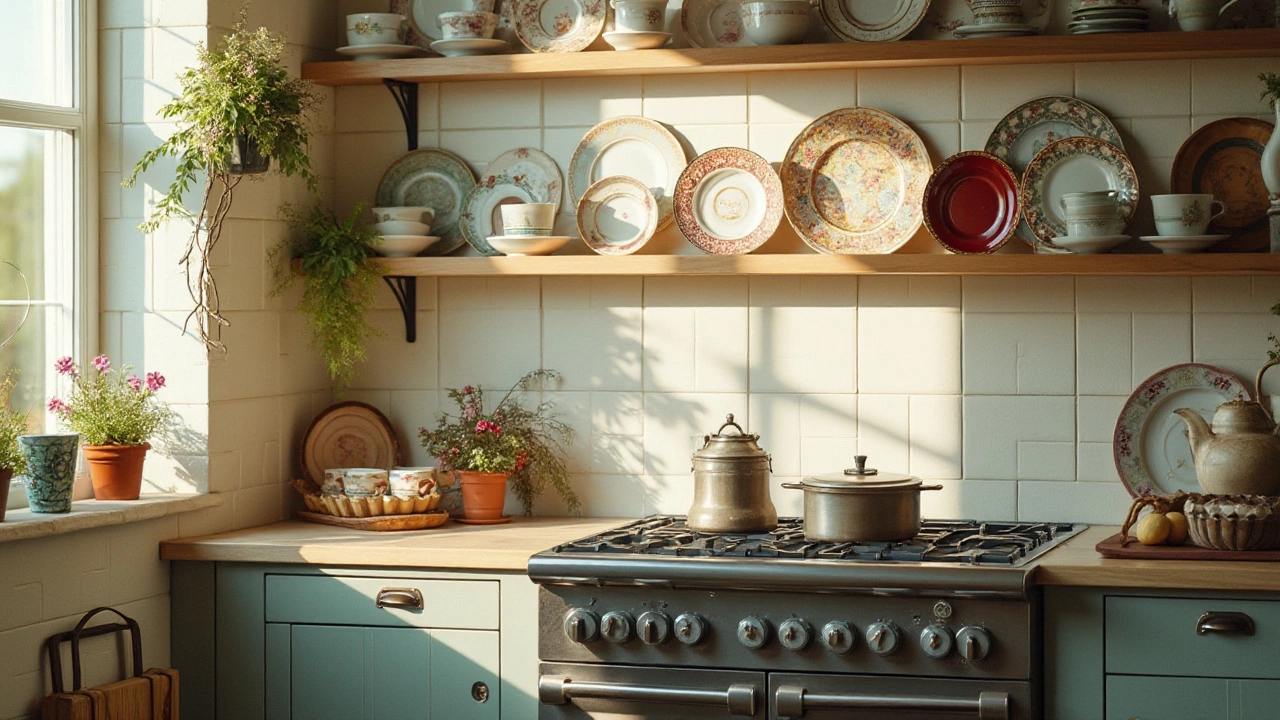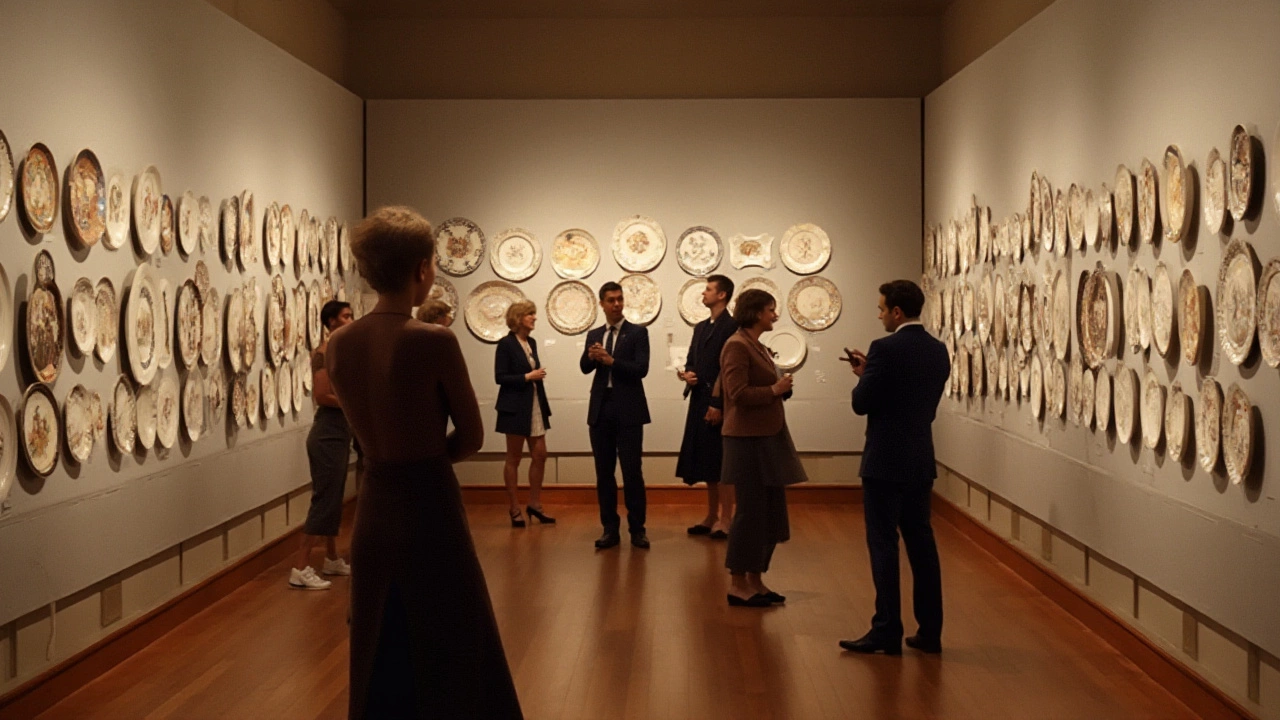Exploring the Historical and Modern Use of Cup Plates

Cup plates may be small, but they have a big story to tell. Originating in the early 19th century, these petite dishes were once essential kitchen items in many households. They served a practical purpose by providing a resting spot for cups while preventing spills on fine linens of the day.
Though their original function has waned, cup plates have found a new identity in the world of antiques and collectibles. Their designs can depict everything from American historical landmarks to intricate floral patterns, appealing to both history buffs and art enthusiasts alike. Today's article dives into the captivating journey of the cup plate, bridging the gap between its humble beginnings and its ornate present.
- The Origin and Historical Context of Cup Plates
- Evolution of Cup Plates Through the Ages
- Modern-Day Collecting of Cup Plates
- Practical and Decorative Uses of Cup Plates Today
The Origin and Historical Context of Cup Plates
The cup plate finds its origins in the early 19th century, a time when afternoon tea was much more than a casual ritual; it was a social cornerstone. As the beverage rose in popularity, particularly in America and parts of Europe, the associated teaware evolved to enhance the experience. Enter the cup plate, a small saucer-like dish designed to catch drips and protect pristine table linens from the unsightly stains of tea and coffee. This innovation marked a significant refinement in dining etiquette, paralleling the period's emphasis on sophisticated social gatherings.
Such gatherings were not only opportunities for relaxation and refreshment but were also venues for showcasing a family's affluence and taste. Cup plates often featured ornate, hand-painted designs or etched glass patterns, becoming as much about aesthetics as practicality. They proved to be an ideal canvas for intricate artistry, frequently adorned with motifs that reflected the owner's interests or societal events of the time. As the concept of leisure began to intersperse domestic and social settings, the ever-present cup plate played a vital supporting role.
Interestingly, cup plates were not ubiquitous from the outset. Symptomatic of the Industrial Revolution, their popularity was closely tied to increased glass and pottery production methods, which increased availability while reducing costs. These advancements made once-exclusive items available to the burgeoning middle class, rendering them a status symbol. According to the American Ceramic Circle, "The proliferation of cup plates in domestic scenes captured both the essence and evolution of 19th-century social practices." The quote encapsulates the integral position these items held, both as domestic staples and cultural artifacts.
Design and Variety
Beyond function, the design of cup plates showcased regional artisan skills. In the United States, for instance, they became telling pieces of Americana, often etched with scenes depicting patriotism, such as the Liberty Bell or the Capitol building, giving modern collectors valuable insights into the cultural psyche of the period. In Europe, particularly in England and Germany, the designs favored intricate floral patterns or neoclassical themes, reflective of the prevailing artistic movements. The popularity of these dishes expanded to include souvenir items—one could bring home a small memento of a place visited.Dimensions and Materials
The dimensions of traditional cup plates were typically around 4-6 inches in diameter, crafted from materials ranging from fine porcelain to pressed glass and silver. Their ingenuity lay in their simplicity and functionality. Some items included maker's marks or stamps, providing invaluable evidence for historians and collectors who seek to date or authenticate these historical pieces today. Despite being overshadowed by the introduction of integrated cup and saucer designs in later years, the nostalgia and craftsmanship of these small plates have etched them deeply into the annals of kitchenware history.
Evolution of Cup Plates Through the Ages
The journey of the cup plate through time is nothing short of fascinating. These small little saucers, which first appeared in the early 1800s, were conceived during an era when social gatherings around tea were at the height of fashion in Europe and America. Initially, they served an essential function—holding tea cups and preserving the delicate fabrics of table linens from splashes and spills, a crucial concern of the time.
As the Industrial Revolution swept across the Western world, manufacturing techniques became both more advanced and more widespread. This notable shift meant that cup plates could be produced more efficiently and in greater numbers. Consequently, they evolved from artisanal pieces to more commonplace items available to the growing middle class. During this period, cup plates often displayed intricate designs created through transfer printing—scenes reflecting popular events, beautiful landscapes, or beloved cultural motifs, bringing an artistic element into everyday homes.
Interestingly, the decline in their practical use began in the late 19th century when more formalized dining sets began including dedicated saucers. As teacups with larger attached saucers grew popular, the original purpose of cup plates started to fade. However, they found a new life in the form of collectibles. The 20th century saw an increase in the popularity of antiques, and many people began to see the beauty and historical value in collecting cup plates. Those who pursued such an interest continuously discovered that many cup plates of the earlier centuries displayed exquisite craftsmanship that served as art pieces even upon close inspection.
In modern times, the trend of collecting has surged again, fueled by a renewed appreciation for craftsmanship and nostalgia. Cup plates are often found in antique shops or at heritage auctions, with some rare pieces fetching hefty sums. This popular enthusiasm even led some contemporary artisans to revive the creation of cup plates, infusing their work with both traditional techniques and modern artistic expressions. This hints at an ongoing legacy—cup plates continue to capture hearts, no matter the era.
"Cup plates serve as tiny blank canvases upon which the social and economic tales of centuries past are effortlessly depicted," remarks ceramic historian, Jane Thompson. "Their evolution tells not just the story of dining etiquette but of artistic progression."
Today, cup plates often turn up as conversation starters in the homes of collectors and historians alike. The path from necessity to nostalgic art is a testament to their remarkable evolution. They remain symbolic of a time when dining was imbued with elegance and culture, a reminder of days where the smallest details were sources of home pride. The evolution of the cup plate is not merely an evolution of dishware; it is a reflection of changing times, tastes, and technological advancements.

Modern-Day Collecting of Cup Plates
The world of antiques and collectibles is vast, with countless treasures to discover, and among these are the cup plates. These little gems, once utilitarian, have now forged an unexpected path into the hearts of collectors worldwide. Not merely relics of a bygone era, they hold a unique, almost nostalgic appeal today. Collectors often describe cup plates as tiny canvases, each capturing a snippet of history or a piece of artistic elegance from the past.
One reason these plates remain popular is the immense variety they offer. From delicate, hand-painted porcelain to robust, pressed glass, the materials used can significantly affect a plate's value and appeal. Patterns often reflect the artistic movements of their time, like intricate Victorian designs or bold Art Deco motifs. Some collectors focus on rare, antique editions that can fetch impressive sums at auctions, while others find joy in amassing plates that evoke personal memories or themes. The rarity and condition are crucial factors, but the stories these pieces tell often outweigh their monetary value for enthusiasts.
In the digital age, collecting cup plates has become more accessible. Online platforms like eBay and Etsy have opened new avenues for enthusiasts to find and trade treasures. These sites have facilitated connections between collectors and sellers across the globe, making rare finds more attainable than ever. The ease of acquiring such items has undoubtedly contributed to the growing community of cup plate collectors, who often share discoveries and insights through dedicated forums and social media groups. This digital connectivity adds a rich layer of interaction and knowledge exchange, breathing new life into the hobby.
Quotes from notable collectors further illuminate this passion. Collecting expert Doris Renfrew, in her article for Antiques Today, remarked,
"Cup plates are windows into the cultural past. They have the uncanny ability to transport us across time with their beauty and historic intricacies."This sentiment captures why collecting cup plates is more than just a pursuit of objects; it's a way to connect deeply with history and artistry. As collectors delve into their searches, they uncover fascinating stories behind each piece, fueling their obsession and spreading their enthusiasm within wider communities.
For those thinking of starting their own collection, there are several tips to keep in mind. Newcomers should research various designs and understand what styles resonate most with them. Visiting antiques fairs and shows offers opportunities for learning and networking with other collectors. It's wise to start small and incrementally grow a collection, focusing initially on what captivates the heart before concerning oneself with value. Some collectors maintain detailed logs of their acquisitions, noting provenance and any unique features or history associated with each piece.
In the world of collectibles, few items blend simplicity and charm quite like the cup plate. Whether you are an experienced collector or a newcomer, the allure of these intricate dishes invites you into a narrative replete with history and artistry. They are mere possessions for some, but for many collectors, each cup plate is a cherished link to another time.

Practical and Decorative Uses of Cup Plates Today
In today's modern kitchen, the traditional cup plate has moved beyond its simple function as a landing spot for tea or coffee cups. It now holds its own as a versatile piece of kitchenware that can be both practical and ornamental. While vintage cups and saucers still serve as charming conversation pieces at tea parties or nostalgic family gatherings, their contemporary counterparts are often used to enhance the aesthetic appeal of home dining setups. Collectors and decorators alike find immense value in arranging cup plates in creative displays that add a touch of history and elegance to everyday experiences.
Among the modern practical uses of cup plates, these small dishes have found a niche role in serving single portions of appetizers, desserts, or small snacks, adding a quaint sophistication to any meal. Imagine presenting a selection of truffles or a petit four on a beautifully decorated dishware piece – not only elevating the presentation but also offering a subtle nod to the history they carry. Additionally, in a world where mixing and matching dish patterns has become trendy, cup plates allow homeowners to experiment with styles, complementing dinner sets with unique designs or colors. This not only adds a personalized touch to home décor but allows for flexibility in transitioning settings from casual brunches to formal dinners.
Decoratively, cup plates have retained their place as sought-after collectible items, coveted by enthusiasts for their artistry and historical significance. Some collectors focus on specific eras or brands, while others are drawn to particular patterns or materials, like porcelain or glass. As they often feature intricate designs, they can be displayed in custom-made frames or shadow boxes, creating a visual story of art and culture that spans decades. Once such a collection is curated, the result is a personalized gallery that showcases an appreciation for craftsmanship.
"There is something uniquely charming about connecting the past with present-day living, and cup plates offer just that," notes Abigail Hart, a noted antique collector, in her book 'Timeless Tablescapes'. She elaborates on how these seemingly simple items can become a focal point of home design, harmonizing aesthetics with tradition.
Interestingly, some venues also choose to use cup plates as part of themed decor, particularly in places that seek to evoke a vintage or historical ambiance. Their use can enhance an atmosphere, from charming tearooms to upscale restaurants that aim to offer patrons an immersive dining experience. As a nod to their past, many places that emphasize sustainability may choose to repurpose cup plates in creative ways, such as coasters for plant pots or soap dishes, demonstrating an adaptive reuse that pays homage to their heritage.